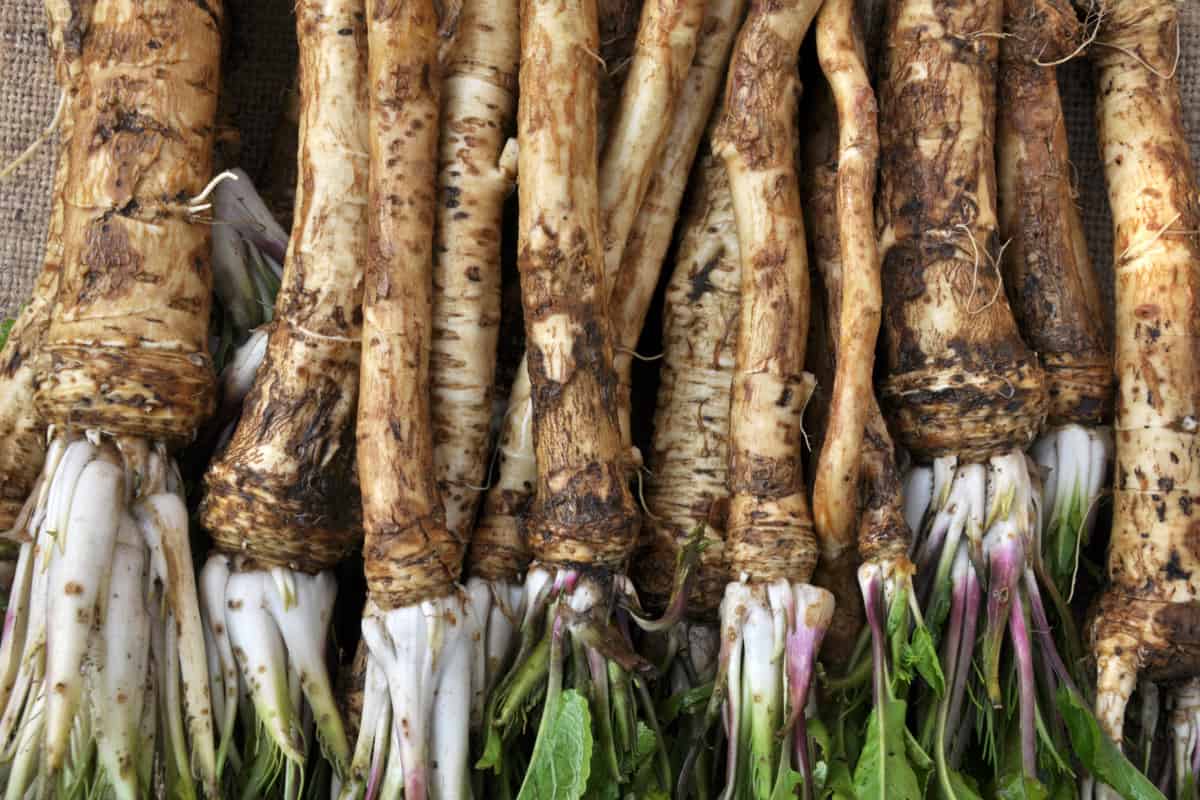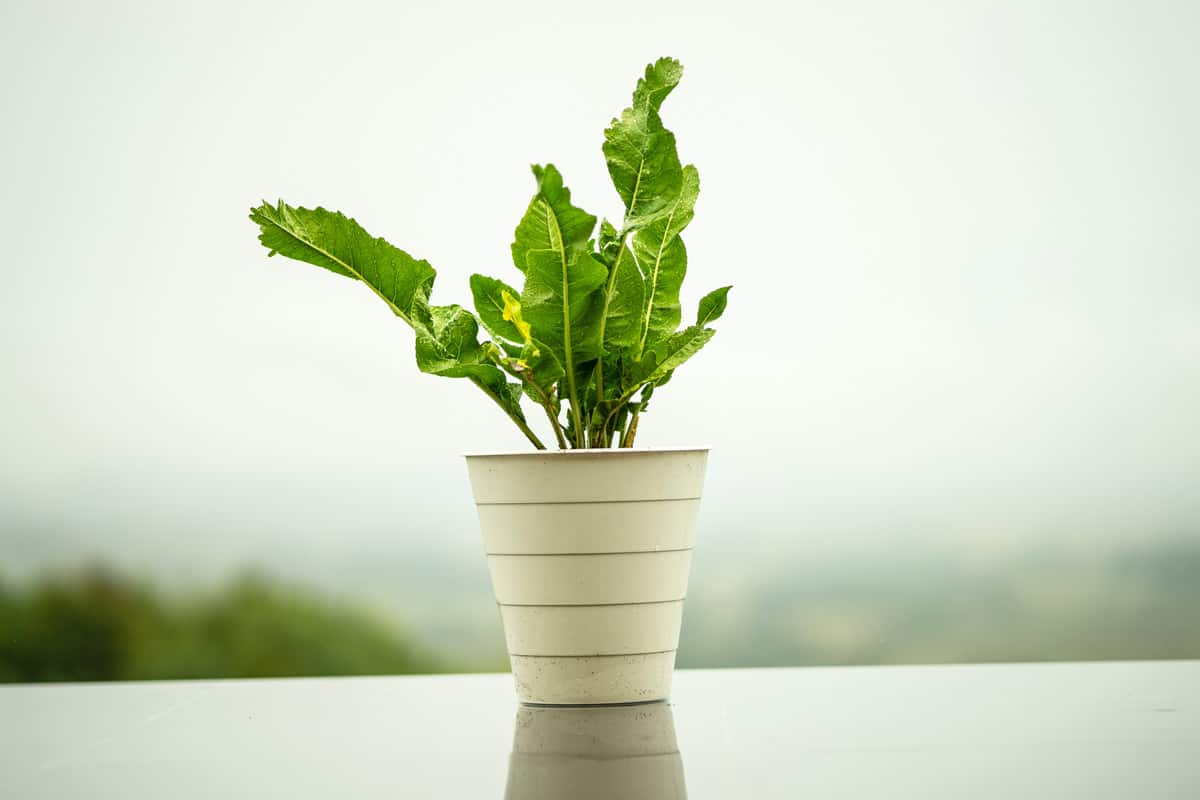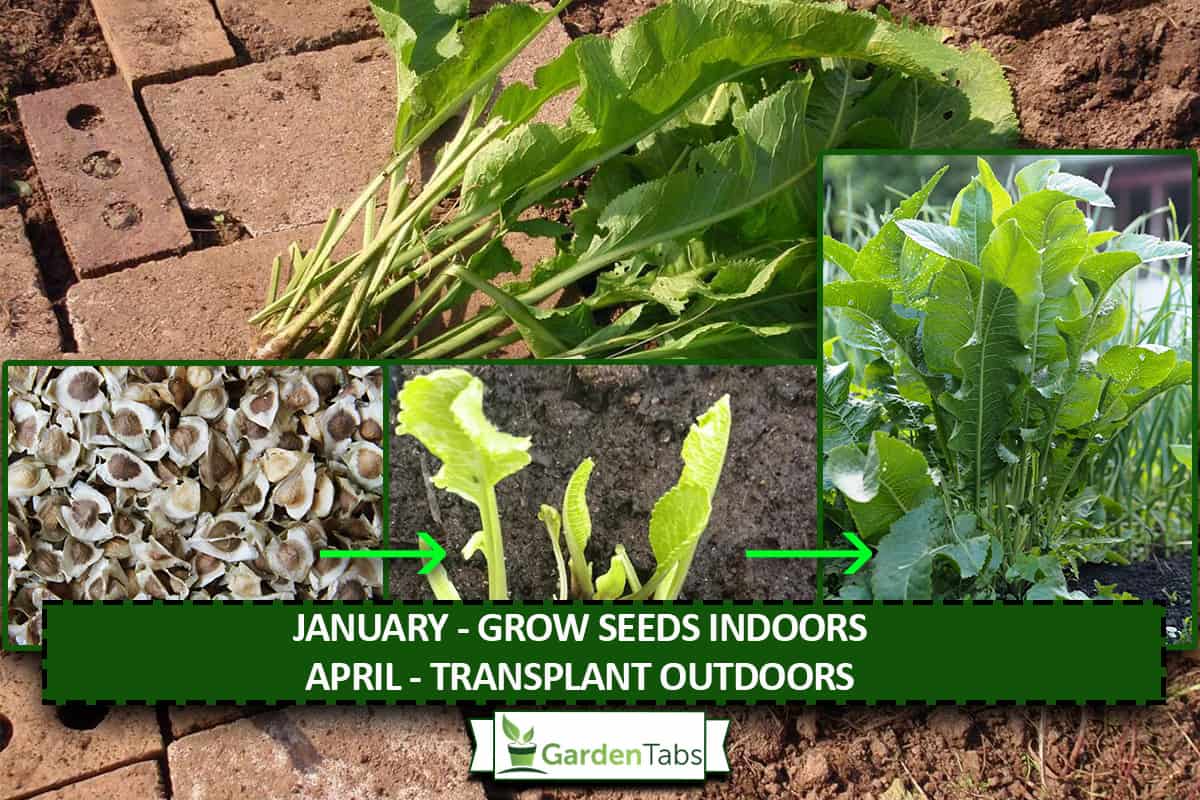Depending on the climate, you can cultivate horseradish as an annual in colder climates or as a perennial in USDA plant hardiness zones 5 through 9. The edible root is highly sought after for its distinctively spicy flavor. However, your concern is when and how to transplant horseradish. This particular topic caught our attention, which led us to research the answer on the internet.
You can get a head start in spring by growing seeds indoors in January or February. Push seeds 1/4" to 1/2" deep into potting soil. It would be best to use biodegradable containers to prevent damaging the roots once you directly plant them into the ground. After a week or two, you will notice germination. By April, your seedlings will be ready to transplant outdoors.
Now that you know the perfect time to transplant horseradish, you must also know how to do it. Please keep reading to learn the details. Doing so might also answer some of your additional questions. Let's delve into the details!

How to Transplant Horseradish
The essential steps in transplanting horseradish are the same, whether you divide established plants, relocate them, or plant fresh seeds. Early in the growing season, before fresh maturation starts, or late in the season when you might concurrently pick some of the horseradish, is the best time to transplant them.

Follow the procedure below to transplant your horseradish correctly:
Step 1:
If your horseradish plants are already in the ground, give them a gradual, steady soaking of water around their bases. Doing such will make the soil more porous, protecting the horseradish's root system from harm.
Step 2:
It would be best to hoe the top 8" to 10" soil in a new location that gets partial or full sunlight. To boost the location's drainage and fertility, you should incorporate 2" to 3" of well-rotted compost, old manure, or any organic supplement into the top 8" of soil.
Step 3:
Utilize a digging fork or a sharp spade to dig the horseradish beneath the root system. Press the tool carefully on the soil, taking the roots out of it and after that, gently shaking the remaining dirt off its roots would be best.

Check out this Rolson garden fork on Amazon.
Step 4:
If you want to increase the number of plants you're growing or only want to harvest some of the root systems, you can do this by slicing the horseradish into smaller pieces. Cut the root parts or crown into 6" to 18" long pieces, ensuring each has at least one bud. If there are no leaves to help you determine which end is the larger one, cut it squarely at the head and at an angle at the other end.
Step 5:
You must excavate long but shallow holes about 6" in width and provide a space of at least 18" away from each plant. Since you need to plant the horseradish root piece at an angle of about 45 degrees, excavate each hole to a depth of 2" to 3" at one end and a little deeper at the other. Prepared horseradish slices should fit snugly into the holes.
Step 6:
Position the horseradish plant segments in their respective holes. Place the root portion at a 45-degree angle, with the end furthest from the horseradish crown higher than the other end.
Step 7:
Once you finish planting your root sections, sheath them with 3" to 6" soil and gently hand-tamp the soil over the horseradish to eliminate any large air pockets.
Step 8:
Horseradish needs 1" to 2" of water per week. So, if you think that the rainfall is insufficient, it would be best to keep watering the horseradish until you reach the desired amount of water.
Step 9:
Once new leaves grow, lightly sprinkle them with a 10-10-10 vegetable fertilizer around the horseradish plants' soil to nourish them. We suggest that no more than one pound of fertilizer be spread over 100 square feet of soil.
How To Care For Horseradish

If you want to maintain your horseradish in its best situation, it would be best to follow the care guide below:
Light
While horseradish plants are shade tolerant, the yield will suffer. So, as much as possible, they should get direct sunlight for at least six hours per day. It is the reason why we recommend planting them in a location where they can receive the sunlight they need.
Soil
Horseradish thrives in soil that is loose and has proper drainage. It should also contain plenty of organic matter. Additionally, horseradish prefers acidic to neutral soil with a pH of between 6.0 and 7.0.
Water
Horseradish requires less than a lot of water. Roots dried out from a lack of water tend to be woody and tasteless. On the other hand, if you constantly soak the roots, they will become exceedingly tender and flavorful. As mentioned, the preferable amount of water is between 1" and 2" each week.
Humidity and Temperature
The ideal climate for horseradish is cool. It grows best in temperatures between 60 and 65 degrees Fahrenheit but may thrive in temps as low as 45 degrees but not exceeding 75 degrees Fahrenheit. Most plants can tolerate high humidity levels as long as you keep the soil moist and have adequate ventilation.
Fertilizer
Horseradish needs fertilizer when planted and again in about four weeks. You can utilize the following as fertilizers for your horseradish:
- compost,
- compost tea
- commercial 10-10-10 vegetable fertilizer (carefully heed the product instructions)
Check out this 10-10-10 vegetable fertilizer on Amazon.
Pollination
Bees and other insects can help with the pollination of horseradish. Wind can also be of help.
What Are The Different Varieties Of Horseradish

There aren't many different kinds of horseradish. You may only be able to discover the common horseradish, and that is the Armoracia rusticana. Alternatively, there is the more attractive Armoracia Rusticana Variegata, characterized by marbled leaves with white and green. 'Variegata' also has a higher tolerance for shade and a lower invasiveness rate.
What Is The Difference Between Horseradish and Wasabi

Wasabi is a type of horseradish native to Japan. Both horseradish and wasabi are derived from plants that are members of the same family. Though similar, their hot tastes are each unique. Wasabi, on the other hand, has shorter leaves than horseradish.
How To Harvest Horseradish

Roots planted in the fall will be available for harvest in late spring, while you can collect spring-seeded horseradish roots in the fall, around October or November. The flavor of the roots is enhanced by a light frost or two, so it is best to harvest them just before the soil freezes.
Excavate around the plant's base and pull off the main root of the horseradish as well as many of the lesser roots you can reach.
Leave only an inch or so of foliage and thoroughly clean the roots. Give them plenty of time to dry out. When wrapped in plastic and stored in the fridge, horseradish will keep for about a month. Instead, place the roots in a moist sand or sawdust container and put them in a cold, dark place where they won't freeze.
How To Plant Horseradish In Pots

Consider planting horseradish in a container instead of your garden if you're worried about it taking over. Properly growing the roots requires a large container at least 30" deep. The container must have openings at the bottom for water to escape. Also, we highly recommend unglazed clay pots to decrease the amount of moisture lost.
Plant the roots in the pot just as you would when planting them directly in the soil. It would be best to keep the top inch or two of the soil moist at all times. In addition, we suggest monthly fertilization.
Read more: "What's The Best Color For Planters And Pots?"
How To Prune Horseradish
A horseradish plant will sprout several stems in its early stages of development. Every new shoot is tapping the plant's resources by developing its own set of tiny roots.
Take out all but one or two of the shoots to encourage the growth of a single huge root, just like the kind you'd get in a store. The downside to this approach is that it will take longer to establish new, little roots for your plant.
Check out these horseradish roots on Amazon.
Overwintering Horseradish
Overwintering shouldn't be of your concern if you plan to develop horseradish as an annual. However, you can utilize a root cellar or just the earth to preserve its roots for future propagation. Moreover, you can shield the roots from the cold by applying a thick layer of mulch around them.
Read more: "How To Overwinter Hostas In Pots."
Typical Insects And Plant Diseases Of Horseradish

Generally speaking, horseradish roots are not very susceptible to pest infestations. However, several pests feast on the leaves, including aphids and flea beetles.
Horseradish, like other members of the Brassicaceae family, can entice pests. Thus, it is best to plant it far from these other plants. Although other diseases are uncommon, horseradish root rot can develop in wet environments.
Read more about: "How To Get Rid Of Black Aphids [A Complete Guide]."
Wrap It All Up
Depending on what you want and need, you can grow your horseradish as an annual or perennial. Transplanting horseradish is indeed straightforward based on the method we discussed above. All you have to do is to be a bit careful when performing the process.
We hope this post has helped you. If you have additional concerns, please feel free to leave a comment. We'd love to hear from you!



